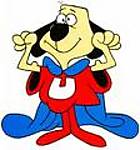I once asked the question about the interior colors of the B-17. The short of it was that the Bombbay and waist gunner areas were bear metal. the rest was somse sort of cromate. Here is the info I was given. I hope it helps. Its a lot of information but its good
During the service life of the B17, from the 'E' to the 'G', there were many changes to equipment fit, internal coatings and other fittings. Some of these were added, then deleted later, whilst some remained constant. Also, some deleted items wer then added again, often due to combat experience at atlitude. For instance, the oxygen system, heating system and the associated clothing and equipment saw many, many changes and modifications, more than a few originating from a single individual within a Squadron.
Also, apart from factory and 'field' mods, there were main depots in the USA which carried out mods, later to become standard fit, as a result of requests or suggestions from the various Theatres of Operation. An example of these is the Air Depot at Cheyenne, where the modified tail gun position on the late 'G's' originated, and normally called the 'Cheyenne Turret'.
In the UK, for the B17's with the 8th AF, (and other types, including 9th AF)there were two main depots for assembly, deep service, major battle damage repair, reclamation/salvage and modification. The main one was Base Air Depot 1, at Burtonwood, between Manchester and Liverpool, which became, at one time, the biggest airfield in the World. Its remains are not far from whewre I live, and I've visited the place on numerous occassions. It closed, under USAF 'rule', in the early 1960's, although there was a main US Army stores there, on a huge site, but small in comparison to the once massive airfield, until just about ten years ago.
Anyway, all this led to many variations in 'standard' fit, and a lot of writers, and modellers, base some of their information on what they have seen of one or two examples, and not just on the B17, and take these as solid fact. Particulary so of part restored aircraft.
By the time the B17 G came into service, there were vast changes to the fittings and equipment, including the internal finish, most of which were either improvements, simplifications, or getting rid of uneccessarily complicated, time consuming, costly or heavy items etc. When the 'G' reached it's final wartime versions, the differences between those aircraft and the first production block 'G's' were immense, and this might give some idea of the 'evolution' of the basic design.
To further illustrate the immense production numbers, and therefore the detail changes, the B17G was produced in over 60 production blocks, at three main plants, with other sub-assembly/component factories. These plants were the Boeing (Seattle) plant, Lockheed Vega, and Douglas. Aircraft from these sources all differed in some details, however small, and this had an effect on paints and coatings in particular.
The B17 F was also produced at these three main plants, in approximately 56 production blocks!
The B17 E, however, was only produced by Boeing themselves - in two production blocks!!
The 'E', being the extensively re-modelled, first version after the already obsolete, and unsuitable (for ETO at least) 'C', was very much a 'luxury' aircraft in it's internal appointments and fittings. As has been mentioned, the majority of the internal walls were clad in padded material, with the exceptiion of the bomb bay and the rear (waist) fuselage.
Originally, these areas were in clear laqured bare aluminium - but not for long. The climate and operating conditions, paricularly over Europe, and specifically in the damp climate of Britain, led to these bare areas having a protective coating.
Now, there is much debate about the type, and colours, of these 'paints'. To simplify things, and I must ask you to pay particular attention to this section, the original coating was, actually, Zinc Chromate. Now there has been, and will continue to be, much discussion, and, frankly, a load of bollocks talked about this 'colour' ! Zinc Chromate was a protective, primer coating, designed to not only do the job of a basic paint, but more importantly to protect against corrosion from the elements, and bi-metal reaction corrosion, caused, for example, where two differing metals meet; in this case, mostly steel, and various aluminium alloy grades. Without this coating, where alloy meets steel, or other metals, the alloy will start to oxidise into a greyish powder, causing all sorts of potential problems, not to mention failure of the panel or component.
This Zinc Chromate was originally 'made up' to a specification, at the factories, and was eventually supplied as a ready-mixed 'paint'. Like any metal-etch primer, it was designed to bond with the top surface of the metal, literally etching slightly into the surface, thereby enabling a strong bond and good surface protection. I won't bore you with the ingredient mix, but suffice to say, Zinc Chromate was a green shade, with a hint of yellow. Any variation in the mix, could, and would, lead to differences in shades, and it is these diferences which have led, over the years, to various theoies about different colours!
The Yellow Zinc Chromate sometimes referred to didn't exist before the late 1950's!
What has been seen though, is a slightly different mix, where the green looks more yellow. This effect can be enhanced by the tones in colour photography of the period, the lighting, exposure etc etc.
At the time of the B17E however, the tones would NOT have exhibited yellow. Most claims about E's being 'yellow' are based on miscaptioned photos, or being misinformed, and are mainly based on the 'F' model, and colour drawings/diagrams, mostly produced by Boeing illustrators!
In later times, once the 'F' came into service, the 'luxury' rose a notch, inasmuch as the Zinc Chromate in crew positions, would also receive a thin coat of clear laquer, or a similar green paint, mainly to prevent wear and tear from the occupants, and also to make these areas more comfortable on the eye. Areas such as the bomb bay, originally in laquered bare metal, retained the ZC, needed to prevent corrosion and other damage.
Cutting a very long story short, after the era of the 'E', and generally throughout the American aircraft industry, the use of Zinc Chromate as a primer in crew areas was discontinued, the replacement being the colour which came to be known as Interior Green.
This colour was actually a similar colour to the ZC, but with the Chromate and Aluminium powder omitted. Originally mixed on site, there could be many variations in shade. Eventually, the paint was factory produced mainly, but, with a number of plants producing the paint, and differing storage times and conditions, allied to application methods, variations in tone could still be seen!
The othe colour used was Bronze Green, and this was normally for weight-bearing structures, such as brackets, seat frames and other separate components etc. The Interior Green was mainly a 'coverall' panel colour. So, in general terms, if it was airframe, it was IG, if it was component, mainly BG.
But, a further complication which leads authors and modellers astray is, most of these changes weren't implimented until part way through the 'F' production runs! And by the time of the mid to late production 'G' model, unneccessary interior coatings were abandoned, to save time and weight! Not a lot of point in taking up production time, materials, and adding weight to a machine with a life expectancy measured in weeks - if it's lucky!!
So, without going into many pages, the early 'E' models sometimes had bare metal areas, later painted in Zinc Chromate, the same colour, more or less, as Inteior Green, unless viewed closely, and the fittings were either 'real' IG, or BG, both of which had a different 'sheen', and were smoother, than ZC. The crew areas mentioned in my previous messages were clad in the padded material, and the seats were bigger, higher and had cushions. Floors, depending on area, were either painted metal, or clear laqured plywood - non-slip coatings were much later.
And a final note on the two colours, Bronze Green and Interior Green.
Both of these could be seen in various shades. Most modellers use an Interior Green shade which is far too bright and 'green'. The one on Bemay's B25 in the Heavy Hitters thread is far too garish for this scale, and way over the top if it was 1/72nd scale. Allowing for variations in shade, it should be more of a dullish, apple green, not too dark, but not as bright as the model quoted. Bronze Green is more of a RAF Dark Green, with a very small touch of black and brown. It's not far off a lightened 'new' Olive Drab , but looks different due to it being semi-matt, as is IG. Both of these colours I normally mix myself to suit the model, and many modellers seem to use commercailly availbel IG, if that's what it is, straight out of the tin/bottle. No problem using it as the base, but just adjust as required, using additions of green, yellow, and/or browns. The same goes for BG.
I could carry on for a long time with this, if I had time, but unless it was all put down chronologically, from the 'birth' of the colours and progreesing to modern day, not only would it be long-winded, but bloody confusing! I guess that, having played around and sort of studied this over the years, analysing photos for probable colours has become second nature - and, of course, I was also trained in photo-analysis, both in the military and during my time as a specialist with Kodak.
Anyway, sorry for the lengthy reply, but I hope it helps at least a little!



























